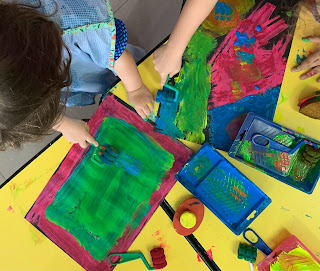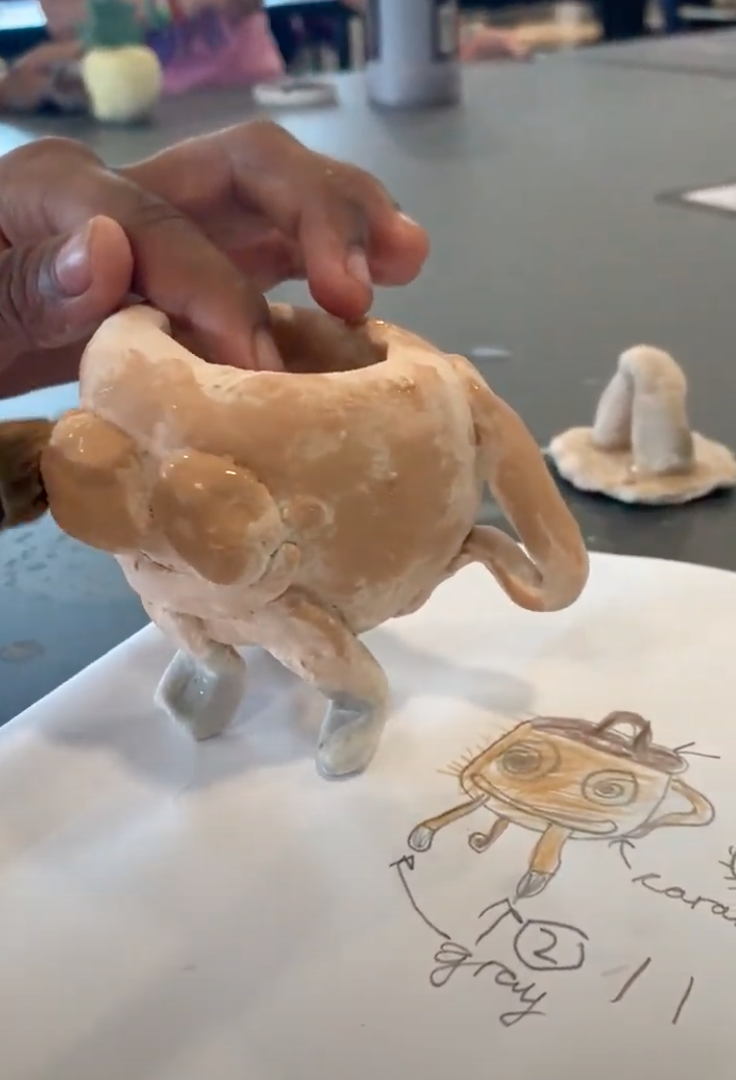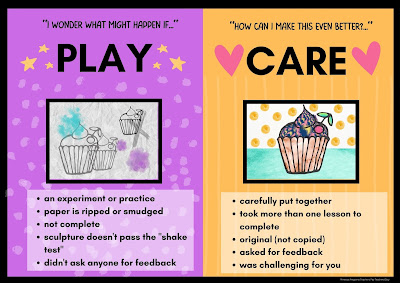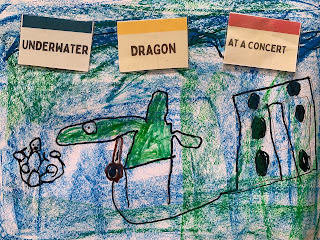6 Ways to Incorporate More Choice in the Art Room
Choice of materials in their project: Working on self-portraits? Teach those basic portrait skills and then let the kids choose if they want to use paint or colored pencils to color. Adding some color to Zentangle masterpieces? Offer a choice of watercolor or markers. This is a great entry point to providing more choice to kids and building up your comfort level. Once you see how well this works, you can loosen the reigns even more and bring in more diverse media. I wrote a blog post about self-portraits and choice here.
Choice of subject: Think about a favorite project that you do year after year-- for example, pinch pot turtles. Ask yourself honestly, “Does it have to be a turtle?” Give them a choice between a turtle and another animal. Or better yet, take them through making a pinch pot together as a class and then let the students add their own embellishments- all it takes is a little scaffolding. Need some guidance about how to do it? Check out my Creative Pinch Pots lesson plan that takes kids through it step by step.
Table-based art centers: Not ready to redesign your whole art room? Create a few temporary “table centers” for a lesson and let your students explore various media or ideas. An easy place to start is with an exploration of drawing materials. Check out this post for more details on how to do this. To help scaffold and guide the exploration of various media, I created technique practice sheets and more creative media exploration sheets too.
Task Parties: The basic idea behind a task party is that kids choose a fun art task out of a box and complete it together as a team. It's super fun, motivational and collaborative. Alisa over at “In the Art Room” wrote a very detailed blog post about how she does Task Parties, and on the first day of school no less! You can also use Art Game Cards in a variety of ways to inspire creativity with your students (seen below)
Use Themes: Themes can provide focus and context in an open-ended way. They help develop critical thinking skills as students need to figure out how to address the theme in their artwork. Looking for ideas about themes and how to use them? Check out 25 kid-friendly art themes plus specific ideas about how they might be used in your art room.
Want to learn more about transitioning to choice-based art education? Check out my workbook Navigating the Transition to Choice. I hope you found this post helpful!







Comments
Post a Comment